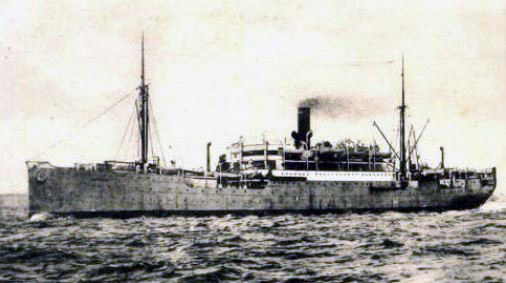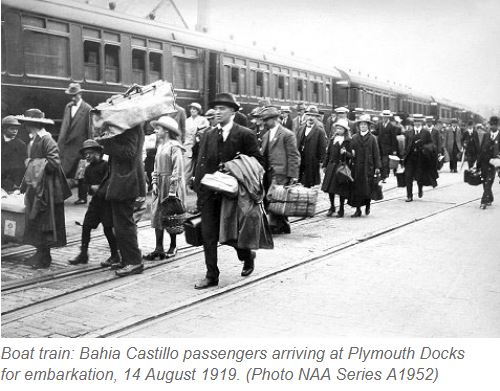SS Bahia Castillo
From Our Contribution
Contents
[hide]Remarks
Built for the German Hamburg South America Line, it was laid up during ww1, before being surrendered to the British in 1919. During its first voyage to Australia in 1919 it carried 586 munitions workers, 342 wives and children and 21 Army medical personnel. The ship was ill prepared and the crew unfamiliar with it. Passengers who wished to get off before it sailed were told there would be no replacement fare.
The trip to Cape Town was unhappy with the 'civilian' passengers seemingly expecting a post war cruise standard of service. Relations with the crew deteriorated markedly. In Cape Town many telegrams were sent complaining of the treatment received. Leaving Durban, the issue came to a head and there was a rowdy gathering of passengers, with threats to the Captain and crew such that the ship returned to Durban and took on a contingent of armed Australian soldiers.
Worse was to follow with the civilians refusing to reboard at Fremantle until the ship sailed with their luggage. Finally, a compromise was reached: Prime Minister Hughes offered to hold a Royal Commission once the ship reached Melbourne; committee leaders would proceed by train; a Government appointee and his wife would travel on the ship to Melbourne to evaluate and observe. The passengers were taken to Albany by train to reboard the ship which sailed on 9 Oct 1919.
In the end, the Commissioner’s report favoured the ship. There were problems, undeniably, and exacerbated by the attitudes of the ship’s master and the officer commanding the military detail, but for wartime, the passenger’s expectations and reactions were too extreme. Public reaction has not been explored. In the context of the war, however, these men were civilians, whereas the nation was mourning the deaths of almost 60,000 men and the physical or psychological wounding of several hundred thousand. A few hundred disgruntled civilians were beneath consideration.
In 1922 the ship was sold to Hugo Stinnes, Hamburg who renamed it General San Martin, and later General Belgrano and it was used on the Germany to South America service. The ship was scrapped in 1932.
Soldiers carried
Plymouth to Fremantle 17 April ‒ 10 June 1920

